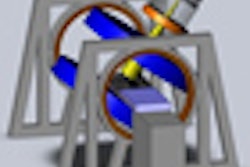In addition, the rotating curved planar reconstruction of the 3D FIESTA sequence can improve the delineation of the entire ACL, according to lead study author Dr. Dapeng Hao, PhD, from the Affiliated Hospital of Qingdao University Medical College, and colleagues.
Hao and colleagues took 3-tesla MRI exams of 40 knee joints in healthy volunteers using a phased-array extremity coil. The imaging protocol included oblique sagittal spin-echo T1-weighted MRI and the 3D FIESTA sequence. The rotating curved-planar reconstructions of the ACL were conducted at 0°, 30°, 60°, 90°, 120°, 150°, and 180°.
Signal-to-noise and contrast-to-noise ratios with 3D FIESTA were compared with those of oblique sagittal spin-echo T1-weighted MRI. The researchers also rated on a three-point scale the presence of the tibial attachment, femoral attachment, and double bundles of the ACL on oblique sagittal spin-echo T1-weighted and curved planar reconstructions of 3D FIESTA MRI.
Their analysis found that the ACL signal-to-noise ratio efficiency of the 3D FIESTA sequence was significantly greater than that of the oblique spin-echo T1-weighted MRI sequence.
3D FIESTA also produced images with significantly greater contrast-to-noise ratios between ACL and synovial fluid than the oblique spin-echo T1-weighted MRI. Curved planar reconstruction by 3D FIESTA MRI also provided excellent visualization of the ACL.



















